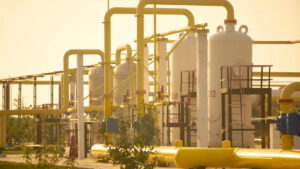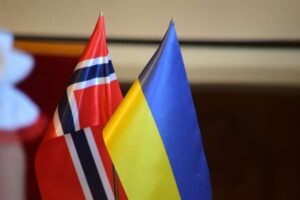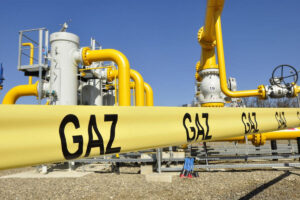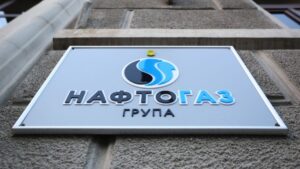
British company Pennpetro Energy Plc (PPP) has announced the signing of the main terms for the acquisition of a 100% license for oil and gas exploration in the Limnytskyi area in Ivano-Frankivsk region through the Polish holding company Target, which was recently established for this purpose.
“The license being acquired by the company is a little-explored, large-scale and highly promising project, the development of which is expected to make a significant contribution to strengthening Ukraine’s energy independence and sovereignty,” PPP said in a stock exchange announcement.
The company intends to immediately recommission one of the previously abandoned wells and conduct 3D seismic surveys before starting to drill a second well in the near future, which is expected to have a high probability of success.
The 172 sq km Limnitsky oil and gas field is located in the Carpathian Basin, where more than 100 oil and gas fields have currently been discovered.
“Obtaining the basic terms of the license for the Limnitsky field in Ukraine is a turning point for our business. It adds an extremely promising asset to our growing portfolio and opens up the opportunity to develop this field,” said PPP Chairman Stephen Lunn.
According to him, Pennpetro Energy’s capital requirements associated with this license are minimal, and the company has significant growth potential.
According to NADRA info, a special permit for oil and gas exploration and production in the Limnitskaya area was issued in 2007 to Geoposuk LTD, which remains an active subsoil user after the recent cancellation of the order of the State Service of Geology and Subsoil of Ukraine to revoke the permit.
In April 2023, Derzhgeonadra filed a lawsuit against Geoposuk LTD in the Ivano-Frankivsk District Administrative Court, demanding that the special permit for subsoil use be revoked. The basis for this was that among the ultimate beneficial owners of the company there is allegedly a citizen of the Russian Federation.
In July 2023, the court of first instance upheld the lawsuit, recognizing the permit as invalid, and in February 2024, the Eighth Administrative Court of Appeal left this decision unchanged. In compliance with the court decisions, the State Geological Service issued an order on February 15, 2024, to revoke the permit.
However, on April 30, 2025, the Supreme Court overturned the decisions of the lower courts, recognizing that the revocation had been carried out in violation of the law, as a result of which Gosgeonedra revoked the previous order on May 5, 2025.
Pennpetro Energy Plc is a public company registered in 2016 in England and Wales. The company is engaged in oil and gas exploration and production, focusing on onshore projects in Texas (USA), particularly in Gonzales County, where it owns rights to more than 2,500 acres. Pennpetro has a number of subsidiaries, including Pennpetro USA Corp., Nobel Petroleum LLC, and Pennpetro Greentec UK Limited.
In 2024, PPP reported revenue of approximately £0.5 million with a net loss of £8.9 million.
On October 16, Pennpetro Energy plc announced the appointment of Mauritius Kalugin as executive director and chief operating officer of the company. Until January 31, 2023, he held the position of executive director and chief operating officer of the Naftogaz group.

The Cabinet of Ministers of Ukraine has set the heating season from November 1 to March 31, instead of the previous period from October 15 to April 15.
The government formalized its decision by Resolution No. 1267 of October 8, 2025, “On amendments to the Resolution of the Cabinet of Ministers of Ukraine of July 19, 2022, No. 812 ‘On approval of the Regulation on the imposition of special obligations on natural gas market entities to ensure public interests in the process of functioning of the natural gas market regarding the peculiarities of natural gas supply to heat producers and budgetary institutions.’”
Source: https://interfax.com.ua/

The total level of natural gas reserves in Ukrainian underground storage facilities (UGS) at the end of last week was 11.5 billion cubic meters (including 4.7 billion cubic meters of long-term storage gas), which is 2% lower than last year’s figure.
This was reported by former Energy Minister Olga Buslavets on her Facebook page.
“Daily gas consumption in Ukraine over the past week has fluctuated at 23-24 million cubic meters per day, which, according to AGSI (the European platform Agregated Gas Storage Inventory – IF-U), allows more than 50 million cubic meters per day to be pumped into UGS facilities,” she wrote.
This daily injection volume is possible thanks to the available gas import volumes, which, according to the Ukrainian Gas Transmission System Operator (OGTSU), have amounted to about 23-24 million cubic meters per day from Hungary, Poland, and Slovakia since the beginning of September (excluding short-haul transit).
In turn, as Buslavets noted, at the end of last week, natural gas reserves in European UGS facilities increased to 84.5 billion cubic meters with a fill rate of 79%, which is 7% below the average for the last five years and 16% below last year’s level, or 16 billion cubic meters.
As reported, the Ministry of Energy of Ukraine plans to accumulate 13.2 billion cubic meters (or 8.6 billion cubic meters without taking into account “buffer gas”) by November 1, 2025, which, according to former OGTSU head Serhiy Makogon, is too low and will require additional imports of 1.5 billion cubic meters in winter.

The Norwegian government has allocated 1 billion Norwegian kroner ($98.3 million) to Ukraine for the purchase of natural gas, according to Serhiy Koretsky, CEO of Naftogaz Ukraine.
“This is a clear response from our partners to Russian terror aimed at depriving Ukrainians of heat in winter,” he wrote on Facebook on Friday.
According to Koretsky, Naftogaz will use these funds to purchase gas to meet the needs of the heating season.
“The assistance received will be an important contribution to a stable winter in 2025-2026 and to strengthening the country’s energy security,” he stressed.
As reported with reference to Prime Minister Yulia Svyrydenko, on August 13, Naftogaz of Ukraine and the European Bank for Reconstruction and Development (EBRD) signed an agreement for a renewable loan of EUR500 million.
“This is the bank’s largest project in our country.
But most importantly, this is the first time such a loan has been provided under an EU guarantee, without a state guarantee from Ukraine,” she commented.
In addition, in April, it was reported that Naftogaz of Ukraine had been granted a EUR270 million loan from the EBRD under a state guarantee to create strategic gas reserves, which Norway supplemented with a EUR139 million grant.
According to the EBRD, the total amount of its financing to Naftogaz of Ukraine since the start of the full-scale war in 2022 has reached EUR1.6 billion.

China increased oil production by 1.3% in January-July compared to the same period last year, to 126.6 million tons, according to the State Statistical Office.
In July alone, production rose by 1.2% to 18.12 million tons.
Oil refining for the seven months totaled 424.68 million tons, up 2.6% from the same period in 2024. In July alone, it rose 8.9% to 63.06 million tons.
Natural gas production in the country in January-July increased by 6% and reached 152.5 billion cubic meters, according to the GSU report. Last month, production rose by 7.4% to 21.6 billion cubic meters.

Ukrgasbank provided Naftogaz of Ukraine with a loan of UAH 4.7 billion for gas purchases, according to the company’s CEO Serhiy Koretsky.
“We are continuing to prepare for winter – another important step has been taken. Naftogaz has signed a loan agreement with Ukrgasbank (UGB) for UAH 4.7 billion. The funds received are already being used to purchase natural gas to build up sufficient reserves in underground gas storage facilities so that the country will be provided with energy resources this winter,” Koretsky wrote on his Facebook page on Thursday.
He expressed his gratitude to the management of Ukrgasbank and the government for their support.
As reported, on July 23, PrivatBank provided Naftogaz with the same loan of UAH 4.7 billion, which was the first for the company and the largest energy loan from the bank since the start of the war.